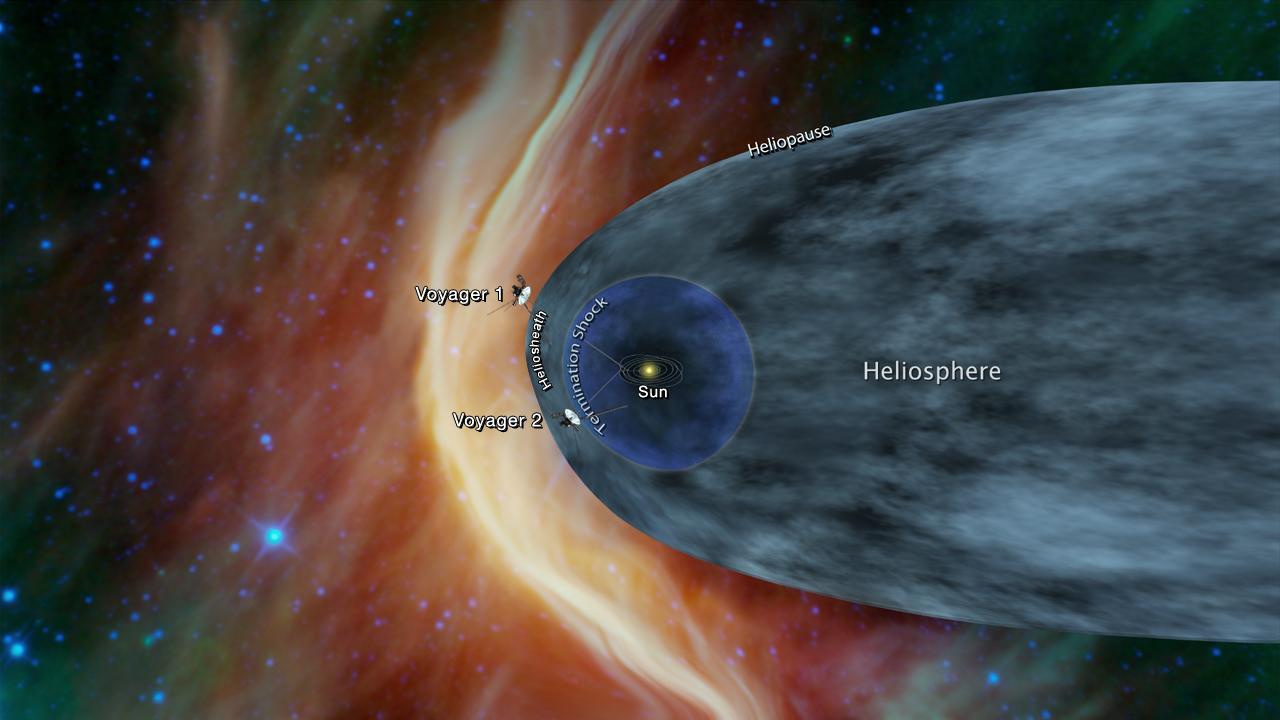What is the difference between the space around the Sun (the heliosphere) and the interstellar medium (the space between stars?
Advanced Level Guiding Question
Big Idea 2.2Educator Background
The region of space influenced by the Sun's constant flow of material (solar wind) and its magnetic field is called the heliosphere. Interstellar space, or the space between stars, is not completely empty, but is made up of gas (primarily hydrogen (H) and helium (He) left over from the Big Bang) and dust. We call this the interstellar medium. The boundary between the heliosphere and interstellar medium is not rigid, but varies with the changing Sun.
Learning Constraints
At this level, students are learning about the contents and scale of the local universe (HS-ESS1-2). At this level students are continuing to make observations about the effects of changing magnetic fields (HS-PS2-4, 5).
Connect to Heliophysics
Connect to the Sun by emphasizing that the heliosphere is in pressure balance with the interstellar medium. This equilibrium determines how far away from the Sun the boundary of the heliosphere, called the heliopause, is located. When the solar wind is dense and fast moving, the heliopause is farther away from the Sun than at other times. Which explains why the boundary is not rigid.
Extend Exploration
Extend student exploration by examining the properties of the heliosphere boundary. Two NASA missions have studied this boundary, IBEX and Voyager. IBEX images the boundary from its orbit around Earth. The Voyager mission, however, launched in 1977, was the first spacecraft to leave the heliosphere and enter into interstellar space (2012)!
Differentiate for Beginner Learners
Support beginner students with reviewing the mechanics of pressure. You can use the analogy of the flow of water through a garden hose. If you have more water, moving faster, you have greater water pressure; if you have less water, moving slower, you have less water pressure. The solar wind produces pressure in the same way, acting against the interstellar medium to push it farther away from the Sun.
Differentiate for More Advanced Learners
Challenge students at the next level by having them further investigate the interstellar medium closest to our solar system, in which astronomers have identified significant regions of space that have distinct properties, called the “Local Bubble” and the “Local Fluff.”

Featured Advanced Resources
Explore this guiding question with these featured advanced level resources.
Heliophysics Resource Database
Use the guiding question above to explore resources at this level or go directly to our database to search for resources by level, NGSS performance expectation, topic, and mission.
Resource Database




